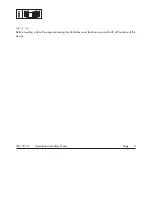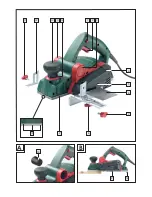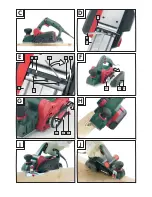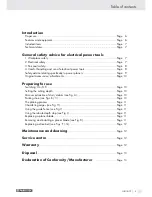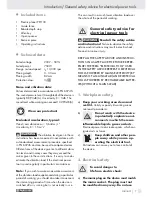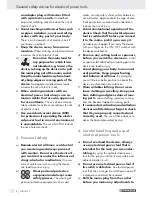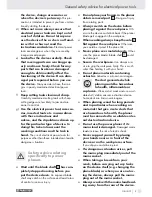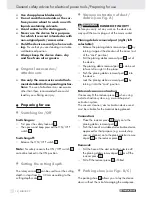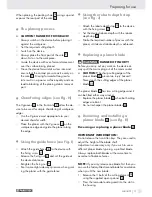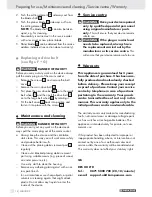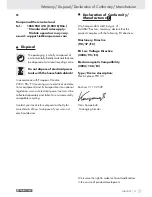
11
GB/IE/CY
When planing, the parking shoe
16
swings up and
exposes the rear part of the sole
9
.
The planing process
CAUTION! DANGER OF KICKBACK!
Always switch on the device before placing it
against the workpiece.
Set the required cutting depth.
Switch on the device.
Always place the front part of the sole
9
down first on to the workpiece.
Guide the device with even forward movement
over the surface being planed.
Move the device forward at a slow rate and
ensure that the contact pressure acts evenly on
the sole
9
. Moving forward at too great a
rate results in a poorer surface quality and can
lead to blocking of the planing debris removal
port.
Chamfering edges (see Fig. H)
The V-grooves
10
in the front sole
9
allow the de-
vice to be used for simple chamfering of workpiece
edges.
Use the V-groove most appropriate to your
desired chamfer width.
Place the planer with the V-groove
10
on the
workpiece edge and guide the planer along
the edge.
Using the guide fence (see Fig. I)
Attach the guide fence
6
to the device with
the fixing screw
7
.
Release the fixing nut
8
and set the guide at
the desired distance.
Retighten the fixing nut
8
.
Exert some slight sideways pressure when guid-
ing the planer with the guide fence.
Using the rebate depth stop
(see Fig. J)
Attach the rebate depth stop
12
to the device
with the fixing screw
11
.
Set the desired rebate depth with the rebate
depth stop
12
.
Make the required number of passes with the
planer until desired rebate depth is achieved.
Replacing a planer blade
WARNING!
DANGER OF INJURY!
Before you carry out any work on the device al-
ways pull the mains plug out of the mains socket.
CAUTION!
The sharp cutting edges of the
planer blade
20
present an injury hazard!
Never touch the cutting edges of the planer
blade
20
.
The planer blade
20
has two cutting edges and it
can be fitted either way around.
Replace the planer blade
20
when both cutting
edges are blunt.
Do not resharpen the planer blades
20
.
Removing and installing a
planer blade
20
(see Fig. D)
Reversing or replacing a planer blade
20
IMPORTANT INFORMATION:
Do not release the two Allen keys. They are used to
adjust the height of the blade shaft.
Adjustment is necessary only if you wish to use a
different planer blade type e.g. a profiled blade.
Always replace both blades at the same time to
avoid out of balance forces.
NOTE:
If you only release one blade first then you
can use the factory-fitted second blade for orientation
when you fit the new blade.
1. Release the 3 bolts of the cutting element
18
using the supplied open spanner
26
.
Press the removable side guard into the slot in
the housing.
Preparing for use


